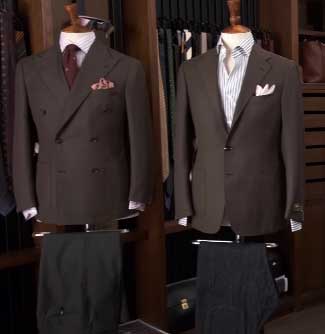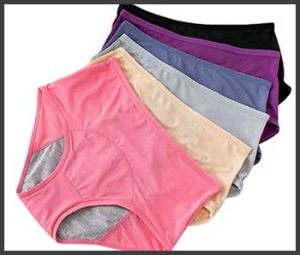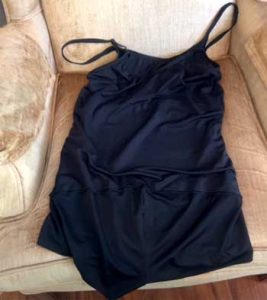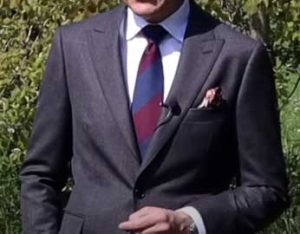When it comes to luxury clothing, Italy is home to some of the most prestigious and renowned fashion houses in the world. Two of the top names in high-end Italian menswear are Kiton and Loro Piana.
Both brands produce exceptional tailored clothing and accessories using the finest materials and craftsmanship. However, there are some notable differences between Kiton and Loro Piana in terms of their history, tailoring philosophy, and product offerings.
This article will examine the unique qualities of each brand and do a head-to-head comparison to help determine which may be best for different needs and budgets.
A Brief Comparison Table
| Aspects | Kiton | Loro Piana |
| Founding Year | 1968 | 1924 |
| Headquarters | Naples, Italy | Quarona, Italy |
| Founder | Ciro Paone | Ermenegildo Piana |
| Current Ownership | Family-owned | LVMH (French luxury group) |
| # of Stores | About 30 worldwide | Over 75 worldwide |
| Tailoring Style | Soft Neapolitan | Refined contemporary |
| Key Products | Suits, tailored clothing, shirts | Knitwear, outerwear, casualwear, suits, shirts, accessories |
| Fabrics Used | Wool, linen, silk, cotton from top Italian mills | Cashmere, vicuña, wool, cotton from own mills |
| Customization | Kiton Bespoken (made-to-order) | Loro Piana Suit Experience |
| Manufacturing | Handmade in Italy | Italy |
| Sustainability Practices | Local artisanal production | Responsible sourcing of rare materials, zero waste policy |
A Brief History of Kiton and Loro Piana

Kiton was founded in Naples in 1968 by Ciro Paone, a fifth-generation tailor.
The brand is known for its meticulous attention to detail and artisanal production methods that follow the traditions of Neapolitan tailoring.
Each Kiton suit is handmade and involves over 25 hours of labor by a single master tailor.
The result is an impeccably constructed garment with beautiful lines and silhouettes.
Kiton utilizes luxurious fabrics from Italy’s finest mills and sources buttons, linings and other components from top suppliers around the world.
The company remains family-owned and continues to produce all Kiton suits within its Neapolitan atelier.
Loro Piana, on the other hand, got its start as a family-run wool mill business in northern Italy in 1924. The brand expanded into finished menswear in the 1970s and established a reputation for using the world’s finest cashmere, vicuna, and other rare natural fibers in its fabrics.
In 2013, Loro Piana was acquired by the French luxury goods conglomerate LVMH. While production has scaled up, Loro Piana has maintained its focus on sourcing the rarest raw materials and crafting them into refined fabrics and garments. The result is a relaxed, understated luxury that epitomizes Italian good taste.
Key Differences Between Kiton And Loro Piana Luxury Menswear
- Tailoring Philosophy and Silhouettes
The Neapolitan tailoring tradition that Kiton follows is distinct for its soft, lightweight construction that prioritizes comfort and natural movement.
Kiton suits feature high armholes, minimal shoulder padding, slightly extended sleeves, and expert handwork, including up to 13 inches of stitching across the lapels. This yields a tailored but flexible, close-to-the-body silhouette.
Loro Piana’s garments have a bit more structure while still maintaining ease of wear. Signature elements include wider peaked lapels, slightly extended shoulders, and trousers with side banding or buckles on the waistband.
The aesthetic is sophisticated and contemporary, blending Italian flair with international appeal.
For someone who prefers a defined silhouette and sharper tailoring, Loro Piana may be the better choice. If a laidback, casual elegance is more appealing, then Kiton’s sensibility may be a winner.
Those wanting something in between could consider a Kiton sport coat paired with Loro Piana trousers for the best of both worlds.
- Fabrics and Materials

With its manufacturing origins, Loro Piana has an unparalleled selection of textiles, especially when it comes to cashmere, wool, and other natural fibers.
Its sumptuous cashmere is hailed by experts as the finest in the world.
Loro Piana is also famous for vicuña, made from the downy hair of rare vicuña animals found only at altitudes above 13,000 feet in the Andes Mountains.
Loro Piana vicuña fabrics are incredibly soft, lightweight, and luxurious.
The company also offers lightweight wool with natural stretch that maintains structure while allowing flexibility and comfort.
While Kiton doesn’t have its own mills, the brand sources wool, linen, silk and cotton fabrics from Italy’s finest like Carlo Barbera, Reda, and Cerruti. Kiton is especially renowned for its wool suiting made from super 200s and super 250s Merino wool.
These high-end cloths have an exceptionally soft hand and allow for minimal linings and interlinings to keep the silhouettes light and free-moving. Both labels use only the finest buttons, zippers, and other accents befitting their luxury pedigree.
For those desiring buttery soft cashmeres and rare vicuña cloth, Loro Piana has an edge. But Kiton’s suitings offer comparable luxury and comfort from Italy’s top mills.
- Product Range and Pricing
Loro Piana offers an extensive product range that includes knitwear, outerwear, casualwear, shirts, ties, shoes, small leather goods, and home textiles. As you’d expect, the prices reach the stratosphere for exotic vicuña or limited-edition items.
For example, a vicuña sports jacket can cost $15,000 to $25,000. Even Loro Piana’s more basic wool suits start around $5,000 and cashmere sweaters are $1,000+.
The Kiton product lineup is more focused on its specialty of tailored clothing and accessories. In addition to suits, Kiton produces elegant sport coats, overcoats, dress shirts, ties, shoes, belts and small leather goods.
Kiton commands similarly elevated pricing – suits begin around $5,000, sport coats start at $3,500, and shirts cost upwards of $400.
For the customer seeking a head-to-toe Loro Piana lifestyle, the extensive range offers endless luxurious options. The Kiton customer is buying into the brand primarily for peerless suiting and tailored pieces.
But overall, both labels cater to the top tier shopper who covets exclusivity and is willing to pay for it.
- Availability and Shopping Experience
Loro Piana operates over 75 boutiques in prime locations globally, including Via Monte Napoleone in Milan, 5th Avenue in New York, Champs-Elysées in Paris, and malls in Dubai. The brand also sells at prestige department stores like Harrods and high-end clothing retailers.
Loro Piana boutiques provide an elegant, exclusive atmosphere with decor reflecting its heritage and focus on natural textiles.
Meanwhile, Kiton is more selective with about 30 international locations. Flagship stores can be found on London’s Savile Row and New York’s Madison Avenue. Otherwise availability is mostly limited to top multi-brand luxury retailers.
The Kiton buying experience is intimate – by appointment only for the most personalized service. The brand’s showrooms reflect Kiton’s Neapolitan roots with Southern Italian decor.
For those wanting maximum convenience, Loro Piana’s global boutique network and broader distribution makes the brand more accessible. But the in-person service at Kiton feels like an insider’s privilege, albeit one requiring more effort to obtain.
- Quality and Value Retention Over Time
A key consideration for luxury purchases is how well they retain value and withstand the test of time. Here both labels deliver excellent quality that makes pieces worth investing in and keeping for life.
Loro Piana uses time-honored techniques and only the most exceptional fabrics to create durable, long-lasting products. With proper care, a Loro Piana cashmere coat or vicuña jacket will last for decades and stand the test of changing trends.
Likewise, Kiton’s fastidious handcrafting techniques yield heirloom-quality garments designed to be handed down to future generations. The canvassed construction and fine fabrics mean Kiton suits can hold their structure and appearance for years of regular use.
When properly maintained, both Loro Piana and Kiton deliver tremendous cost per wear over time. Rather than disposable fast fashion, these are forever luxury pieces.
- Service and Customization
A hallmark of luxury is personalized service catered to the client’s individual needs and tastes. Both brands provide excellent made-to-measure services for the ultimate customized experience.
Loro Piana allows shoppers to select not just fit and style, but the exact fabrics and details for any product. During the Loro Piana Suit Experience, clients choose from over 4,000 fabric options and numerous customization possibilities for a wardrobe tailored to perfection.
Meanwhile, Kiton takes customization to the extreme with its Kiton Bespoken program. Clients can commission entirely one-of-a-kind garments handmade start to finish just for them. During multiple fittings, every microscopic detail is personalized, making each Bespoken Kiton piece absolutely unique.
For those with the budget, custom orders from Loro Piana and Kiton represent the pinnacle of bespoke luxury. Both houses cater fully to the customer’s vision.
- Sustainability and Ethics
With luxury brands, clients expect care not just for quality but for socially and environmentally responsible practices. Kiton and Loro Piana both emphasize sustainability, though their approaches differ.
Loro Piana has partnered with Ovis 21 to preserve rare vicuña in the wild through responsible shearing and release. This ensures the survival of the species while producing small quantities of the finest vicuña fiber.
Loro Piana also uses wool, cashmere and other materials from sustainable origins. It has implemented a zero-waste production policy to reduce environmental impact.
Kiton does not use the same exotic materials as Loro Piana. However its artisans handcraft suits from start-to-finish in southern Italy, keeping manufacturing local and supporting workers.
The brand also utilizes wool and other fabrics from top regional suppliers. While Kiton’s craft methods are more resource-intensive, they support domestic jobs and local economies.
Ultimately both brands aim for ethical, sustainable practices but their avenues differ based on the uniqueness of their supply chains. Customers will appreciate the care taken either way.
Which Is Better?

The choice between Kiton and Loro Piana comes down to personal taste and needs.
For those who prize softness and comfort, Loro Piana’s luxurious cashmeres and vicuña may provide the ultimate experience.
The brand offers a breadth of products from sporty sweaters to refined suits to loungewear using the world’s finest materials.
Meanwhile, fans of Italian tailoring tradition will appreciate Kiton’s artisanal Neapolitan techniques. The brand caters specifically to elegant formalwear and timeless tailored looks made meticulously by hand.
Both houses provide excellent craftsmanship, luxury fabrics, customization options and reasonable efforts towards sustainability. The two brands simply occupy slightly different territory on the Italian luxury spectrum.
For shoppers seeking the peak of textile refinement and variety, Loro Piana is likely the better choice. But those wanting heritage Neapolitan suiting would do well to go with Kiton. It’s a matter of aligning with the history and sensibilities that best resonate for an individual’s needs.
Either way, both Loro Piana and Kiton represent the pinnacle of luxury menswear in Italy and globally. Investing in these brands means acquiring pieces of heirloom quality built to become future classics in any gentleman’s wardrobe.
While not inexpensive, the exceptional craftsmanship and materials make that investment worthwhile.
Also Read: Comparison of Canali And Corneliani Luxury Suits.
Frequently Asked Questions (FAQ)
Loro Piana is renowned for producing the finest textiles and clothing using rare and exceptional materials like vicuña, cashmere and extra-fine merino wools. Their access to these unique raw materials combined with expert Italian craftsmanship is what makes Loro Piana extraordinary.
Yes, Loro Piana is known for outstanding quality and durability. They use time-honored techniques tailored for each material to ensure their cashmere, vicuña and other products last for many years. The quality easily justifies the luxury prices.
Some of Loro Piana’s main competitors in the high-end Italian fashion space include Brunello Cucinelli, Brioni, Isaia, and Kiton. Brands like Ralph Lauren Purple Label and heritage British names like Burberry also overlap somewhat in market position.
Italy has many prestigious fashion houses, but Gucci could be considered the most influential and highly regarded Italian brand globally. Other top names include Prada, Giorgio Armani, Versace, Salvatore Ferragamo and Dolce & Gabbana. However, Italian luxury brands each have their own unique identities and specialties.
Final Thoughts
When it comes to luxury menswear, Loro Piana and Kiton represent two prestigious peaks of Italian craftsmanship and taste. Loro Piana brings its heritage of unparalleled textiles to a modern, versatile collection that combines comfort and elegance.
Kiton adheres to generations of sartorial tradition and exacting techniques passed down through its Neapolitan tailors. While their specific sensibilities differ, both houses offer exceptional quality, customization, and care for their products and customers.
There is no wrong option between these venerable Italian brands – merely an opportunity to select the unique heritage and stylistic details that best reflect your personal lifestyle and values.
By investing in Loro Piana or Kiton, you secure access to the pinnacle of fashion in which flawless fit and materials are transformed into something greater – a second skin of timeless, effortless sophistication.



